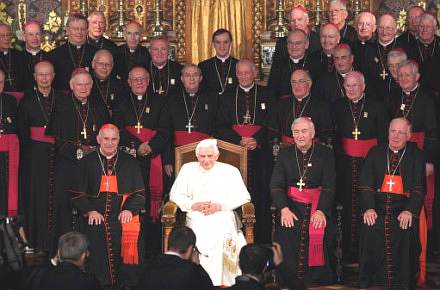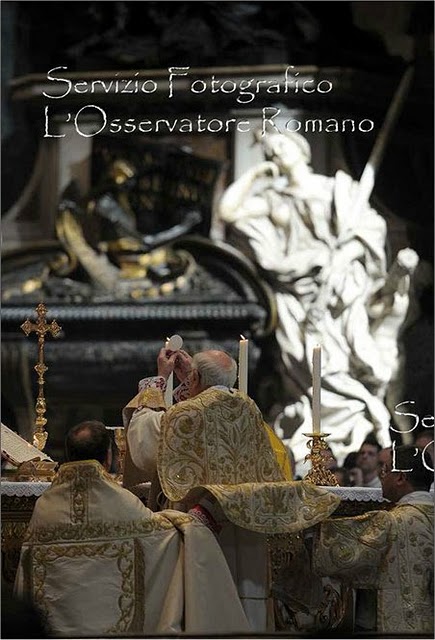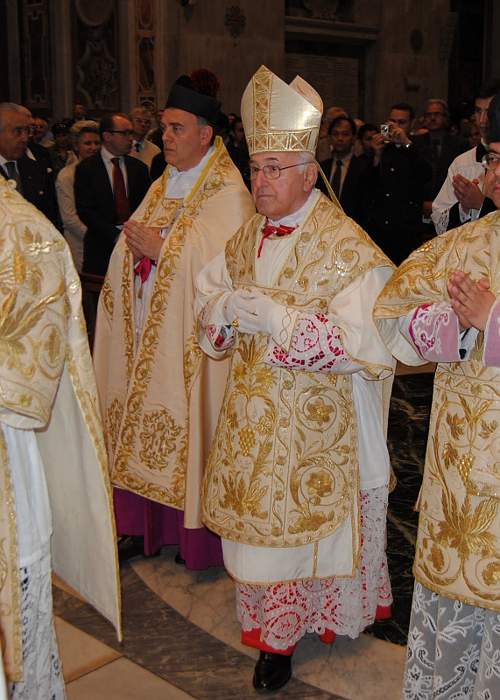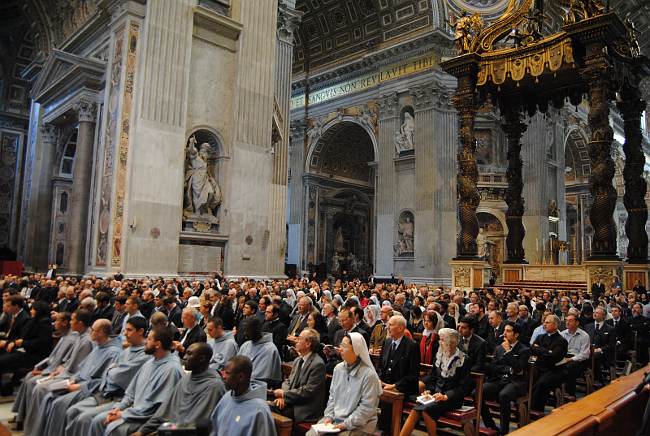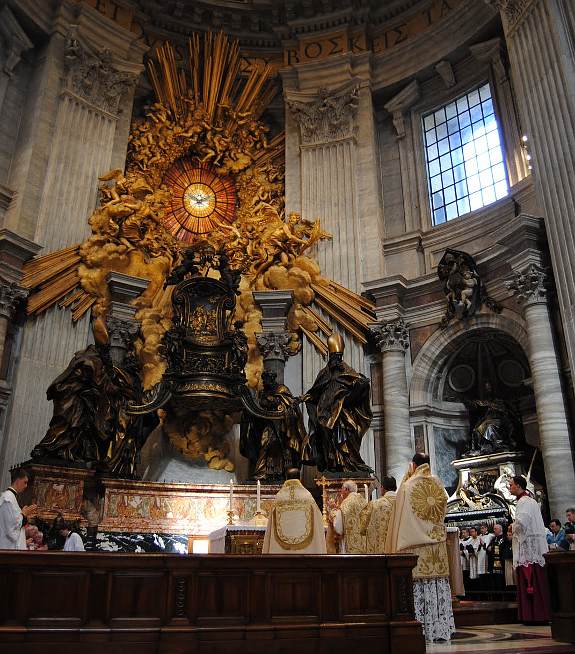Først nå er en engelsk oversettelse av pave Benedikts innledningshilsen ved 50-årsjubileet for det Pavelige Liturgiinstituttet i Roma, St. Anselmo. Jeg har funnet oversettelsen her, og tar under med det jeg syns er viktigst – innledning og avslutning er tatt bort, og jeg har uthevet to-tre ting:
…. On the eve of the Council, in fact, the urgent need for reform in the liturgical sector emerged ever more acutely, also postulated by the requests made by various episcopates. Moreover, the strong pastoral demands that motivated the liturgical movement required that a more active participation of the faithful in liturgical celebrations be encouraged and elicited through the use of national languages. Also necessary was an in-depth examination of the subject of the adaptation of the rites in the various cultures and especially in mission lands.
In addition, the need for a more thorough study of the theological foundation of the Liturgy appeared clear from the outset, in order to avoid lapsing into ritualism or fostering subjectivism and to prevent the celebrant from making himself the centre of attention; and to base the reform firmly found within the context of the Revelation and in continuity with the tradition of the Church. …
Dear friends, the title chosen for the Congress of this Jubilee Year is equally significant: “The Pontifical Liturgical Institute, Between Memory and Prophecy”. As regards memory, we must note the abundant fruits generated by the Holy Spirit in half a century of history and let us thank the Giver of all good for this, despite the misunderstandings and errors in the practical implementation of the reform. …
To the “memory” belongs the very life of the Pontifical Liturgical Institute, which has made its contribution to the Church committed to the reception of the Second Vatican Council, through 50 years of academic liturgical formation. Formation offered in the light of the celebration of the holy mysteries, of comparative liturgy, of the word of God, of liturgical sources, of the Magisterium, of the history of ecumenical requests and of a solid anthropology.
Thanks to this important formative work, a large number of those with degrees and licences now offer their service to the Church in various parts of the world, helping the Holy People of God to live the Liturgy as an expression of the Church in prayer, as a presence of Christ among people and as a constitutive feature of the history of salvation.
In fact, the conciliar Document sheds a clear light on the dual theological and ecclesiological character of the Liturgy. The celebration at the same time brings about an epiphany of the Lord and an epiphany of the Church, two dimensions that unite in the liturgical assembly, where Christ actualizes the Pascal Mystery of death and Resurrection and the people of the baptized draw more abundantly from the sources of salvation. The active presence of Christ subsists in the liturgical action of the Church: what he did as he went about among human beings, he continues to make active through his personal sacramental action whose centre is the Eucharist.
With the term “prophecy”, our gaze opens to new horizons. The Liturgy of the Church goes beyond the “conciliar reform” itself (cf. Sacrosanctum Concilium, n. 1), whose aim, in fact, was not primarily to change the rites and the texts, but rather to renew mentalities and to put at the centre of Christian life and ministry the celebration of the Paschal Mystery of Christ.
Unfortunately, perhaps, we too, Pastors and experts, understood the Liturgy as an object to be reformed rather than a subject capable of renewing Christian life, since “A very close and organic bond exists between the renewal of the Liturgy and the renewal of the whole life of the Church. The Church not only acts but also expresses herself in the Liturgy and draws from the Liturgy the strength for her life”. …
The Liturgy, the summit toward which the activity of the Church is directed is at the same time the fount from which all her power flows (cf. Sacrosanctum Concilium, n. 10), with its celebratory universe thus becomes the great educator in the primacy of the faith and of grace. The Liturgy, a privileged witness of the living Tradition of the Church, faithful to its original duty to reveal and to make present in the hodie of human vicissitudes the opus Redemptionis, lives on a correct and constant relationship between healthy traditio and legitima progressio, which the conciliar Constitution has made lucidly explicit in n. 23.
In their programme of reform, the Council Fathers wished to maintain an equilibrium between both terms, a balance between the great liturgical tradition of the past and that of the future. Tradition and progress are often clumsily opposed. Actually, the two concepts merge: tradition is a living reality, which therefore includes in itself the principle of development, of progress. It is as if to say that the river of tradition also carries its source in itself and flows towards the outlet. …

